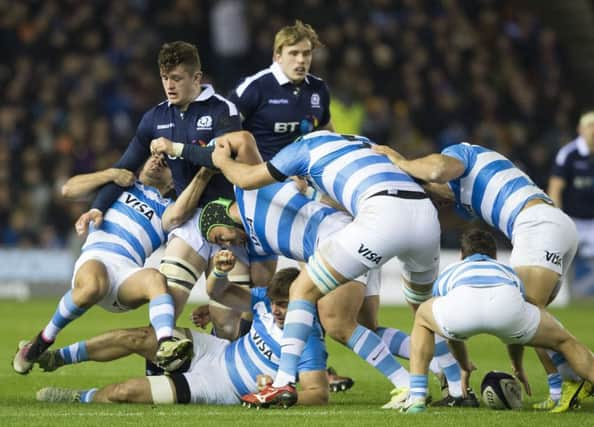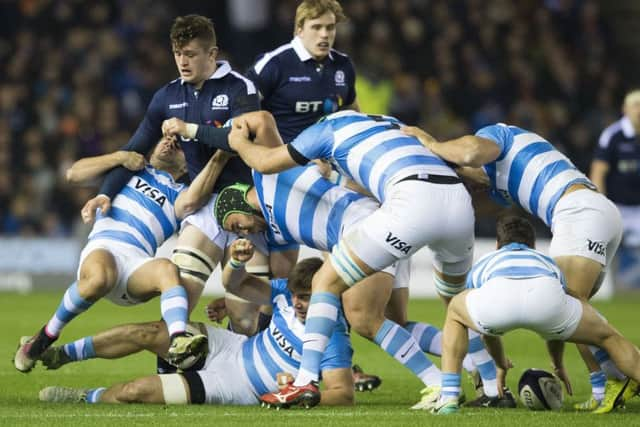Rugby terms explained: ruck or maul?


To help you separate your ‘ruck’ from your ‘maul’, our quick guide and video will break down the important distinctions of each so you can follow along with the technicalities of the tight plays.
Rucks and Mauls often come about as a result of a tackle - either failed or successful.
Advertisement
Hide AdAdvertisement
Hide AdAfter completing a successful tackle an opponent will stop the ball carrier in his tracks and wrestled him to the ground, effectively ending active play.


Sometimes you see a grounded player lying on his back clutching the ball close to his chest. A ‘ruck’ skirmish occurs when a player is on the ground and at least one player from each time is making physical contact above him.
Players standing over the ball need to use their feet to play the ball, if the original ball carrier no longer has it in his possession.
Engaging players standing over the ball are joined by their teammates who join together in the hope that their combined physical strength will surpass that of the opposing team.
The winner is usually the team who can use their feet to drive the ball behind them until it get’s to the rear player’s back foot where it can be collected and passed along.


If the tackle was unsuccessful in bringing the ball carrier to the ground, a ‘maul’ often occurs.
You can tell it’s a maul when the ball-carrier remains standing, is held back by one or more opponents and is being protected by one or more of his own teammates.
In a maul, the ball can not be on the ground.
The team in possession attempts to drive their opponents back towards their goal line and the ball can be passed back between players in the maul, eventually working its way into the hands of a player not in the maul, who makes a run for the goal line.
So there you have it.
Advertisement
Hide AdAdvertisement
Hide AdIf the ball and the player is on the ground and players are passing it around with their feet, it’s a ruck.
If the ball is being held by a standing player, or being passed around a collected pile-up of players, it’s a maul.